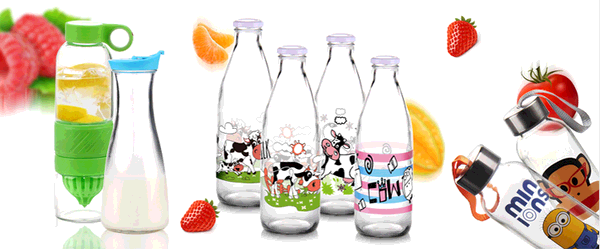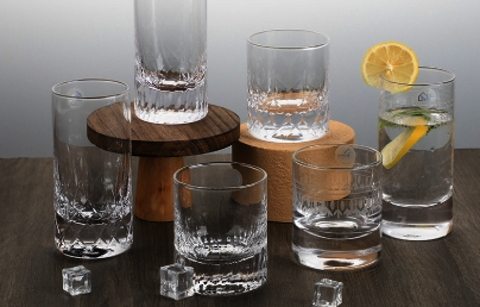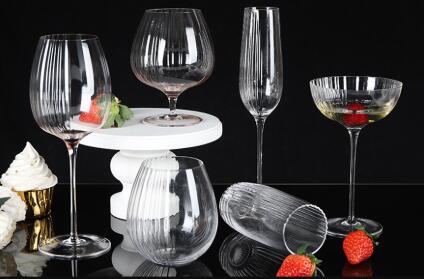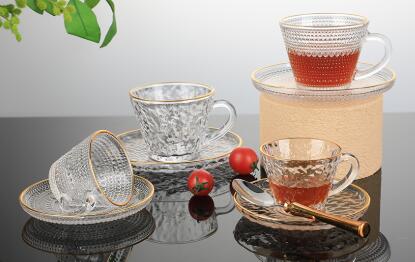CHINA GLASS BOTTLE MANUFACTURING PROCESS AND THE RECYCLING OF GLASS BOTTLES
Pulished on Jan. 23, 2019Glass is a widely used inorganic non-metallic material with a wide range of applications. It can be used in construction, daily use, art, instrumentation and other fields. In addition to the commonly used tempered glass and printed glass, there are also optical fiber, dimming glass and other types that are technically demanding. In this article we will introduce the workflow of the factory to produce glass bottles, and highlight the benefits of recycling and reuse of glass bottles.

First, how does the factory produce glass bottles?
Glass bottle manufacturers produce glass bottles. The production process of glass bottles mainly includes:
1 Raw material pre-processing. The bulk raw materials (quartz sand, soda ash, limestone, feldspar, etc.) are pulverized to make the wet raw materials dry, and the iron-containing raw materials are subjected to iron removal treatment to ensure the quality of the glass.
2 batch preparation.
3 melting. The glass batch material is heated in a pool kiln or pool furnace at a high temperature (1550~1600 degrees) to form a uniform, bubble-free liquid glass that meets the molding requirements.
4 molding. Put the liquid glass into the mold to make the glass products of the required shape, such as flat plates, various utensils, etc.
5 heat treatment. Through annealing, quenching and other processes, eliminate or produce stress, phase separation or crystallization inside the glass, and change the structural state of the glass.
Examples of china glass bottle
◆ Machine made clear glass oil bottle
◆ Lamp bulb shape glass bottle
◆ 450ml transparent sport glass bottle
Second, the recycling of glass bottles is good
At present, all the controversy facing glass bottle packaging is concentrated on the post-use treatment. Everyone knows the 3R principle, namely Reduce, Reuse, Recycle. But for glass bottle packaging, recycling problems Obviously far greater than the advantage of recycling. Recycled glass bottles consume much less glass energy than new glass bottles made from glass materials. According to the Glass Bottle Packaging Association, about 11% of glass bottles are Recycling and re-use in processing can help save 2-3% energy consumption. Glass bottle recycling is also conducive to saving resources and reducing pollution. Another problem is that the bottle type of glass bottles can't keep up with the times, leading to glass bottles. Recycling. Although many companies know that recycling can save a lot of money, but if a popular glass bottle type is no longer popular, it is destined to be eliminated.

However, the repeated use of glass bottles can greatly contribute to cost savings. As long as the glass bottles are sterilized, they can be re-entered into the packaging process without the need for pulverization, melting and re-forming. Whether to choose recycling or reuse, consider There are many cost and benefit factors, specifically the following aspects:
◆ Whether a glass bottle requires a deposit to increase the reuse rate;
◆ Whether the recycling of local packaging materials is good;
◆ Whether the retailer is willing to accept the requirement for reuse;
◆ Whether the juice manufacturer has set up a factory near its factory to carry out repeated filling. If the glass bottle needs long-distance transportation, the cost is unreasonable;
◆ Whether the juice manufacturer adopts the standard glass bottle type, and whether the government has relevant enforcement measures.
Cost analysis is certainly true, but it must also take into account the consumer response, government policies, producer attitudes, etc. From a holistic perspective, repeated use of glass bottles is a more economical packaging method, even cheaper than cheap paper. The box is cheaper. The glass bottle that is not reusable is the more expensive type of all packaging forms! At the same time, the economy is developing at a rapid pace, and people's consumption concept has also improved, even if the juice supplier counts the packaging cost. There is not much impact. Of course, other juice suppliers recycle glass bottles, which has certain advantages in price, but the bottle type of glass bottles is not static.
Related concepts
Glass Knowledge
Glass is an amorphous inorganic non-metallic material, generally using a variety of inorganic minerals (such as quartz sand, borax, boric acid, barite, barium carbonate, limestone, feldspar, soda ash, etc.) as the main raw material, and a small amount of auxiliary materials are added. of. Its main components are silica and other oxides. The chemical composition of ordinary glass is Na2SiO3, CaSiO3, SiO2 or Na2O·CaO·6SiO2, etc. The main component is a silicate double salt, which is an amorphous solid with a random structure. Widely used in buildings, used to separate light from the wind, is a mixture. There are also colored glass in which a certain metal oxide or salt is mixed to exhibit color, and tempered glass obtained by physical or chemical methods. Sometimes some transparent plastics (such as polymethyl methacrylate) are also called plexiglass.
Glass bottle Knowledge
Glass bottles are widely used in food and beverage as well as packaging containers for many products. Glass is also a very valuable packaging material. In the case of a wide variety of packaging materials entering the market, glass containers still occupy an important position in beverage packaging, which is inseparable from its packaging characteristics that cannot be replaced by other packaging materials.









